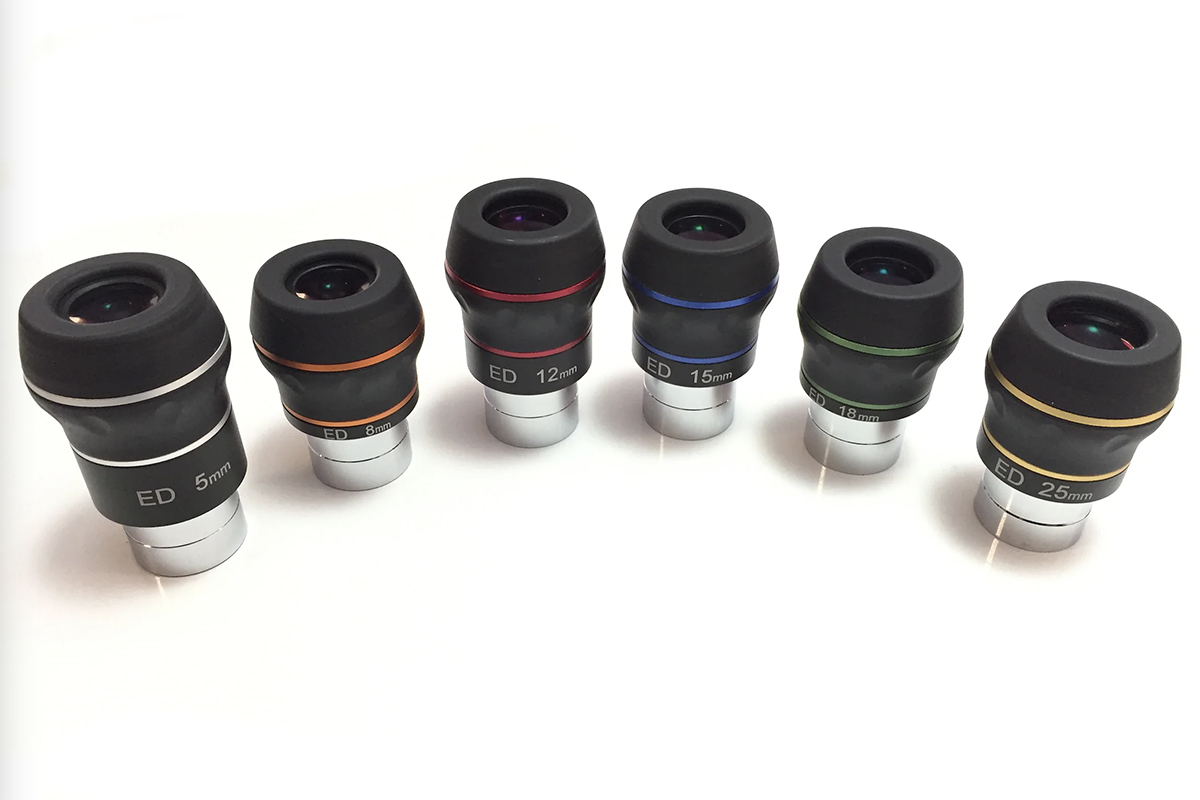Telescope accessories
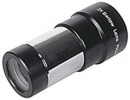 Barlow: It is a complementary accessory to the eyepieces. They are composed of a negative lens that elongates the image plane in a telescope, so it can double (2x) or triple (3x) the image, although the higher magnifications are used, the blurrier the image will become.
Barlow: It is a complementary accessory to the eyepieces. They are composed of a negative lens that elongates the image plane in a telescope, so it can double (2x) or triple (3x) the image, although the higher magnifications are used, the blurrier the image will become.
The Barlows therefore, what they do is raise the focal length of the telescope.
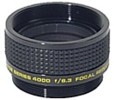 focal reducer: It is like a Barlow lens but in reverse, since its function is to shorten the focal length of the telescope and obtain an image that is smaller than the original.
focal reducer: It is like a Barlow lens but in reverse, since its function is to shorten the focal length of the telescope and obtain an image that is smaller than the original.
This system is used when looking to create a wider field, generally for panoramic astrophotography. It involves a loss of resolution, but is very useful for photographing events such as eclipses.
 Diagonal: It is a structure that is attached to the eyepiece holder, precisely with a diagonal shape, where there is a flat mirror inside that bounces the light to reach the eyepiece located at the other end.
Diagonal: It is a structure that is attached to the eyepiece holder, precisely with a diagonal shape, where there is a flat mirror inside that bounces the light to reach the eyepiece located at the other end.
It is a solution that facilitates viewing, particularly for very high objects that would be very difficult or sometimes impossible to see when the telescope tube is completely perpendicular to the ground.
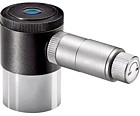 Reticulated eyepiece: It is an especially useful accessory in long exposure astrophotography. The reticle included in the eyepiece helps to keep an object centered in the field of view, keeping another object within the field as a reference.
Reticulated eyepiece: It is an especially useful accessory in long exposure astrophotography. The reticle included in the eyepiece helps to keep an object centered in the field of view, keeping another object within the field as a reference.
Some also have the option that the reticle is illuminated, making it much easier for us to appreciate the crosshair that is used as a reference.
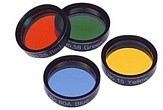 Filters: They are accessories that come before the eyepiece, with the aim of highlighting certain characteristics that you want to see in a particular object.
Filters: They are accessories that come before the eyepiece, with the aim of highlighting certain characteristics that you want to see in a particular object.
exist planetary filters of colors, each with different characteristics to enhance, such as increasing the contrast of Jupiter's cloud bands, darkening or lightening areas of Mars, clarifying the Cassini division on Saturn, seeing the red spot more precisely, etc. The job of these filters is to absorb certain wavelengths and let others pass through, something very useful to see the planets in maximum detail.


